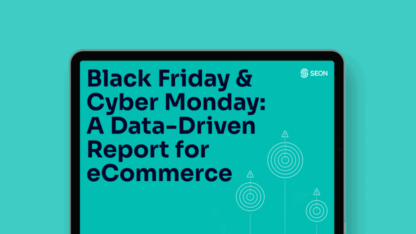As any merchant in the online landscape will tell you, chargebacks always raise alarms, red flags, and eyebrows for revenue teams. They each represent a distinct divot in the flow of returns.
A less costly process is a refund, which, while not quite as damaging, is nearly as undesirable.
Lets take a deep dive into the differences and similarities between chargebacks and refunds, and examine how to reduce both at your business.
What’s the Difference Between Chargebacks and Refunds?
Both chargebacks and refunds are mechanisms to return processed funds to unsatisfied customers, the main difference being whether the merchant refunds the money themselves, or else at the request of their issuing bank, in the case of chargeback.
Chargebacks are costly, both in lost revenue and customer service demands. Many merchants now use chargeback management tools to track disputes, speed up resolution, and reduce overall losses. In 2023, Chargebacks 911 estimated the average cost of a single chargeback at $190.
Meanwhile, refunds will naturally be less costly but still require significant resources to make sure refunds don’t tip over into chargebacks. Financial data analysts variously report that in 2023, the volume of refunds issue within ecommerce will run over $200 billion in 2023, a number that any company will tell you they hope to not compound by letting their refund rate spill over into a higher chargeback volume due to poor customer service or inadequate information on the website.
As the chargeback process involves a comprehensive protocol on the part of the bank, the chargeback process is much more convoluted and costly than a refund request. Chargebacks are usually what customers turn to when a merchant’s refund process is either inaccessible or slow.
| Refund | Chargeback | |
| Parties involved | • 2: customer, merchant | • at least 4: customer, merchant, issuing bank, acquiring bank, payment gateway (plus BNPL, other intermediaries) |
| Initiated by | • merchant (after shopper request or not) | • shopper, via bank |
| Resources required | • customer support team • time to discuss with customer | • customer support team • time to process the chargeback • potentially, time to contest the chargeback |
| Cost to merchant | • lost sale • in some cases, lost item • processing fee on original transaction | • lost sale • lost item • several processing & admin fees • impact on chargeback ratio • reputational damage |
| Result for customer | • cost of purchase recovered | • cost of purchase recovered • keep item(s) (if received) |
The Importance of Differentiating Between Chargebacks and Refunds
Both refunds and chargebacks represent a net loss for the merchant. Neither is a target outcome for any company, but refunds are certainly preferable to the costs associated with chargebacks.
In the case of a refund, the customer’s money gets returned, and the product gets reclaimed, but in many cases cannot now be resold at full price, if at all. A refund request is when a customer, be they a fraudster or not, asks for their money back from the merchant, rather than from their card-issuing bank. The resources spent on processing this refund, including the customer service itself and the processing of the returned item (if physical), represents the expenditure for the merchant.
With a chargeback, the same individual would be placing that request with their bank instead. The product, if physical, may or may not be returned, but the merchant will also return their money and be burdened with the chargeback processing fee.
This seemingly minuscule difference has a ripple effect, because it means that with refunds, there are no intermediaries, and the merchant has much more control of the process as well as insight into the claim and how it will be resolved.
What are Double Refund Chargebacks?
Double refund chargebacks are where the customer collects two repayments, both a chargeback and a refund, on a product they were unsatisfied with. It represents the worst possible outcome in terms of damage to returns, as the refund is essentially paid twice, and the costs of the chargeback are also taken on. In many cases this could mean double or triple the loss for a single instance of double refund chargeback.
Friendly fraudsters may intentionally initiate this, contacting both their bank and the merchant at the same time to begin the chargeback and refund process. They collect both repayments and saddle the merchant with the chargeback processing fees, and in many cases in the modern world of digital fulfilment and no-return policies, also gets to keep the product.
For non-nefarious customers, double refund chargebacks occur most often when the language surrounding the two processes is unclear. If a refund is taking too long to come through, a customer may assume that this function of the merchant is broken or, again, unsatisfactory, then initiate a chargeback to recoup their loss. This may end up with the merchant fulfilling both requests. To avoid this, companies should make sure the language around their refund policy is clear, including the expected timeframes for refund requests to be fulfilled.
How Do Chargebacks and Refunds Work?
Both chargebacks and refunds are processes that return processed funds to the customer, either by the merchant repaying the customer for the price of their purchase themselves or else through the merchant’s acquiring bank.
Notably, both these forms of compensation are done with a separate payment that is equal to the initial expenditure, as opposed to a payment reversal, wherein the exact same funds that were spent are simply redirected back to the customer. Payment reversals are enabled by digital payment processing times and have a limited window during which they can be initiated.
The process leading up to either a refund or chargeback is the same. Where they two diverge from another is after the customer decides they are unsatisfied with their purchase, and then finds one or the other more convenient. Whether this falls on the side of refund or chargeback is largely up to how well-equipped the merchant is to handle refunds quickly and efficiently, and how specific the language surrounding these policies is.
Chargeback flows typically look like this:
From this, it should be clear that the chargeback process represents a sizeable commitment of resources, on top of the mounting fees associated with the arbitration process and the chargeback itself.
Partner with SEON to reduce fraud rates in your online store with real-time data enrichment, whitebox machine learning, and advanced APIs.
Ask an Expert
Cost of Refunds vs Cost of Chargebacks
Though both mechanisms involve the returning of outlaid money to a customer, refunds only have the added cost of customer service infrastructure and any processing fees, whereas chargebacks require even more infrastructure during the arbitration process, as well as the fees for that arbitration, which may often cost more than the returned money itself.
To a customer, the two processes might seem almost identical. In fact, the chargeback workflow with their bank might even feel smoother than approaching a merchant as a customer and explaining why you should receive your money back.
It should be acknowledged that though chargebacks are in place to protect consumer rights, and rightly so, merchants are certainly at a disadvantage. This is because it is very difficult to do chargeback recovery, which entails showing ample proof that the products or goods were in the expected condition, that they were delivered to the shopper, that the merchant has taken all recommended steps to ensure the payment was legitimate, and so on.
So, in the case of refunds, a merchant can more easily challenge the customer’s claim if it is false (and thus a case of friendly fraud). If your Terms and Conditions are bulletproof, you might also choose to explain to the customer that they do not have a legitimate claim for a refund.
Therefore, the cost of chargebacks is amplified by the fact they are less likely to be blocked by the merchant – be they fraudulent, fraud-related, or legitimate.
Reasons to Issue Refunds Before They Turn Into Chargebacks
Refunds are always more beneficial to companies than chargebacks. Here is why:
- They save you time and money: By dealing directly with the customer, even if the business needs to return the money, a merchant avoids paying the banks and payment processors’ admin and processing charges – including the dreaded chargeback penalty. You might even save the sale or at least encourage them to return to your shop later on. Refunds are also much quicker to deal with than chargebacks.
- Keeps you on good terms with banks: Refunds have no impact on the merchant’s chargeback ratio. If the chargeback rate of a business is high, they will be forced by the bank and payment processors to pay higher admin and processing fees on all their transactions. Get it too high, and you can’t even trade with customers who use this type of card issuer. In simple terms, you won’t be able to process any Visa or Mastercard cards, for example.
- Happier customers: By speaking to them directly, the merchant is able to – or at least can try to – ensure the customer is still happy and might be returning. Importantly, it becomes obvious that it is the shop that helped the customer and demonstrated goodwill, rather than the bank helping them. This in turn helps your brand reputation.
- Identify quality issues: For genuinely faulty items, the merchant can find out which of their stock isn’t working out for customers and choose to change suppliers, their delivery company or other partners. This is because with a refund request, the merchant can ask the customer for additional information about what went wrong, which is ideal for quality control/
How to Encourage Customers to Request Refunds, not Chargebacks
One of the most cost-effective ways to mitigate against the headache of chargeback fraud is to gently encourage your customers to request refunds instead. So, how do you do this?
It starts with customer service. As we have seen, it is more intuitive and less time-consuming for a customer to ask for their money back from the shop than the bank, when they can find a way to do so.
In fact, one could even say it is more convenient. Indeed, customers are more likely to instinctively turn to their merchant rather than the bank if they can find a way to contact them. This is even the case online, perhaps because of bricks-and-mortar habits.
- Make your contact options easy to find on your website.
- Consider employing a chatbot to serve customers via social media.
- Monitor Twitter and other platforms for complaints against you, and be proactive.
- Depending on the size of your venture, you can also consider employing a dedicated billing support team available to reach via your website, for even easier contact.
In a similar vein, consider adapting your messaging to stress how happy you are to help with any issues at all. Finally, the Terms and Conditions section of your website should be up-to-date and easy to understand. If your shipping policies are on the complicated side, consider simplifying them, or providing a FAQ section to make them easier to grasp.
How SEON Stops Fraud in Chargebacks and Refunds
SEON’s chargeback management solution helps businesses prevent fraud and recover lost revenue with smart automation and AI-powered insights.
It stops losses before they start by preventing fraud upfront, closing critical gaps, and reducing overall risk. Merchants can manage fraud and chargebacks in one place, making faster, data-driven decisions without manual effort.
By enriching signals from emails, cards, devices, and IPs, SEON provides deep intelligence that cuts chargeback rates, minimizes false positives, and protects genuine customers — all while keeping the checkout experience frictionless.
FAQ
No. Though both processes, when completed as normal, result in the customer getting their money back for a purchase that was somehow unsatisfactory, one is issued by the processing bank, and the other by the merchant. For the merchant, there is a significant difference in associated costs, as a refund only returns the customer’s spent money, while a chargeback process involves fees, penalties, and potential reputation issues that impact the merchant’s bottom line.
For customers, there isn’t really any difference. For merchants, certainly. Where a refund only involves returning any money spent by the customer, a chargeback also involves the payment of processing and admin fees and can potentially harm the merchant’s reputation with their banking partners.
A void transaction is whenever a merchant cancels a payment before it has time to reach the customer’s bank. This simply means that the merchant doesn’t intend to collect this payment, for any reason at all, including because it’s been found to be fraudulent.
Banks and card issuers also monitor refund ratios just like chargeback ratios. However, because an ecommerce or other retail business has much more control over refunds, it is easier to keep those down, compared to chargebacks.
For merchants, a refund ratio is the percentage of your total sales that end up being refunded. Interestingly, card issuers such as Visa and Mastercard allow for much higher refund ratios than chargeback ratios – which is one more reason for merchants to try to encourage refunds.
A void transaction is even better for a merchant than a refund, because the payment was never processed to begin with. As a result, even fewer fees are attached. A merchant may void a transaction if they realize that the purchase was a result of fraud, for example, or if they have overcharged the customer by mistake. Voiding can help avoid both refunds and chargebacks, when done for good reason and with confidence.
Sources
- Statista: Change in fraud levels experienced by online merchants worldwide in 2021, by type, by Qualtrics
Relevant Content
- Liability Shift – Payment Liability Shifts: Understanding and Preparing for Them








